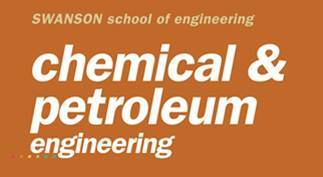Research Highlight
Water-Oil Separation

Above figure: On the surface of treated cotton, water (stained with a blue dye to aid the observation) easily spreads, while oil forms a bead. When used as a filter, such cotton allows water to pass through but blocks oil.
Brief Introduction to Our Work
We have developed a technique for separating oil from water via a filter (of e.g. fiberglass, polyester, or cotton) coated with a polymer that blocks oil while allowing water to pass through. For a demo of our technology, check the following videos on youtube:
Video 1: Separation of crude oil from sea water, both from the Mexico Gulf;
Video 3: A continuous water-oil separator
The filter hinges on a polymer that is both hydrophilic and oleophobic, meaning that it likes water but repels oil. On the surface of ordinary cotton treated with the polymer, water easily spreads, while oil forms beads (see the figure at the top of this page). When used as a filter, such cotton allows water to pass through but not oil. The filter can be produced by submerging the cotton in an aqueous solution containing the polymer then drying it in an oven
or in open air.
The cost for treating the fabric is very low, estimated to be less than $0.2 per square foot fabric. Only very small amount of polymer is needed to treat the cotton. We estimate that 1 pound of the polymer is enough to treat more than 2,000 square foot cotton or fabric. The polymer binds strongly to the cotton. The treated cotton has been submerged in water-oil mixture for more than a month without noticing significant change in either the oil-repellency of the cotton or the separation efficiency of the filter.
Such filters have found use in two applications: (i) for cleaning up massive oil spill such as the one we had in the Mexico Gulf, and (ii) for continuous water-oil separation in industries.
(i) For cleaning up massive oil spill.
For cleaning up the oil spill, the treated fabric can be used with booms to collect oil using the scheme shown below. 
Two booms form a U-shaped collecting area, and an oil-collecting “sock” is used at the end of the collecting area. The two booms will be dragged by boats, forcing oil-contaminated water to flow through the “sock” made using the treated fabric. The water will flow through the “sock” but oil will be collected within the “sock”. The collected oil can be collected by another boat. For a massive slick like the one off the Gulf Coast, large, trough-shaped filters (similar to a surface fishing trawler) can be dragged through the water to capture oil at different depths of water. The oil could be recovered and stored and the filter reused. The fabric may also be used as a low-cost alternative material to booms. (ii) For continuous water-oil separation. We have developed a continuous water-oil separator by combining two filters: one allows oil to pass but stops water, and the other allows water to pass but stops oil. By using such a separator, one stream of water-oil mixture can be splitted into two streams: a water stream that has less than 0.5 w.t.% of oil, and an oil stream that has less than 0.5 w.t.% of water. Such water-oil separators may be used to (i) separate water from oil in the oil fields, (ii) separate gross amounts of oil from the wastewater effluents of oil refineries, petrochemical plants, chemical plants, natural gas processing plants, and other industrial sources, and (iii) separate oil from the bilge water accumulated in ships as required by the international MARPOL Convention. Please check this video link for a lab-scale demo.
What is new? What is the difference between our technique and the prior art?
To make a surface that repels oil but allows water to wet is an extremely challenging task. Before our work, techniques to make a surface that has exactly the opposite property, i.e. repel water but allow oil to wet, are well known. And such techniques have been used to make filters that allow water to pass but stop oil. Such a filter is able to separate minute amount of water from a gross amount of oil. However, water will be accumulated in front of the filter and eventually completely blocks the oil. In addition, because water is typically heavier than oil, such filters cannot be used for water-oil separation by gravity (because water will get underneath the oil and block the filter). The filter developed by us that is able to allow water to pass but stop oil is a “game-changer” to water-oil separation technologies. Such a filter may combine with the previously developed filter (that allows oil to pass but stops oil) to form a “splitter”, which can be used to continuously split a water-oil mixture to two streams: one for pure water, and the other pure oil.
Highlights by Media and Press
Our work on water-oil separation has attracted much attention from media and press. The following are examples.
- More than 100 Links on the Internet:Google Search Results of Highlights on the Internet
- KDKA 6 pm TV News (6/9/10) Pitt Professor's Filter Separates Crude Oil, Water
- Discovery News, "4 Feasible Oil-Spill Ideas from the Public"
- International Business Times, "Cleaning Oil With Cotton"
- Pop City, "Pitt researcher invents polymer that captures the crude to clean the Gulf, see how it works!"
- Ceramic Tech Today, "Pitt’s Gao demonstrates new oil–water filtration system for possible Deepwater Gulf spill usage"
- Pittsburgh Post-Gazette, "Pitt professor wants BP to try his filter,"
- Pittsburgh Tribune-Review Front Page, "Pitt prof's oil-cleanup process a hard sell"

